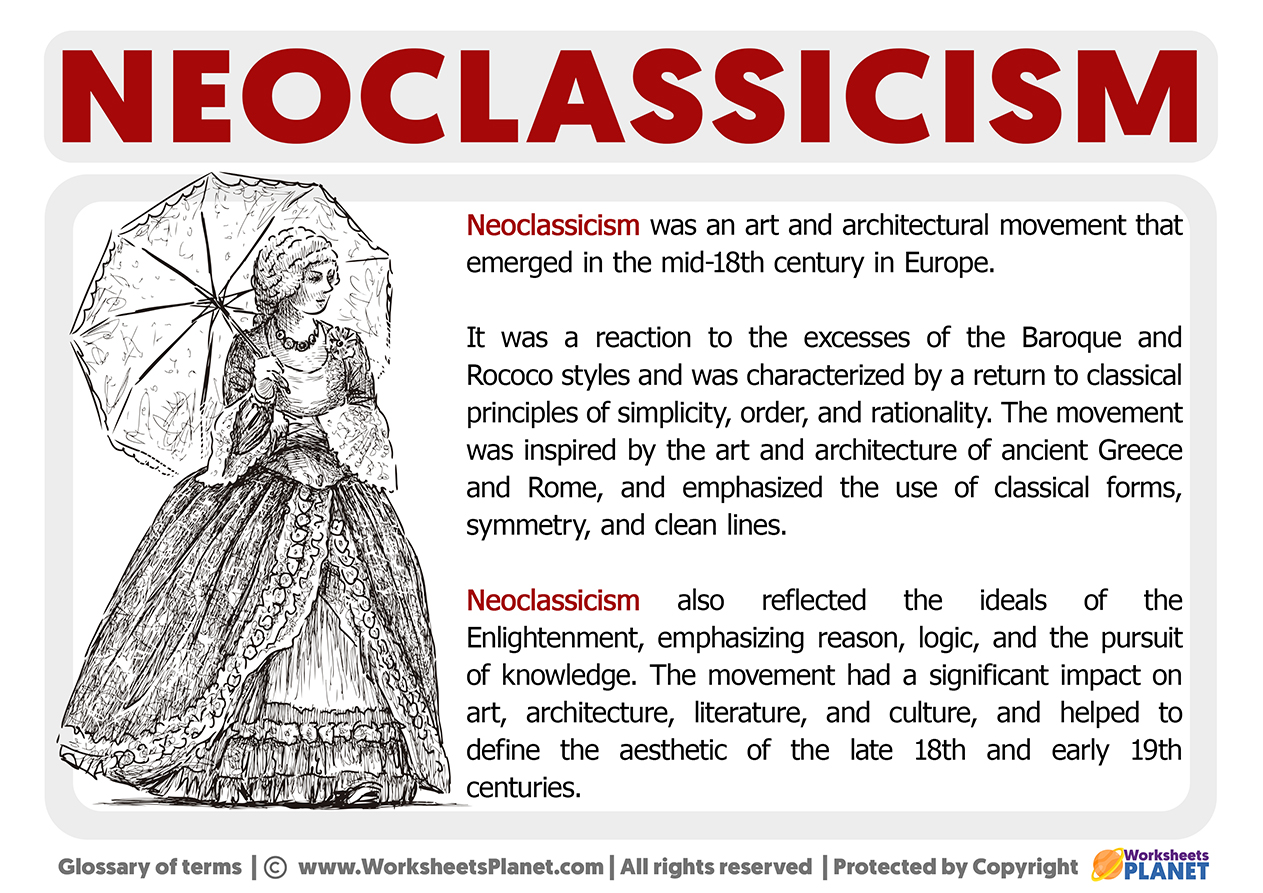
Neo-Classicism emerged in the 17th and 18th centuries as a movement that sought to revive the principles and aesthetics of classical antiquity, particularly those of ancient Greece and Rome. This literary movement emphasized reason, order, and harmony, reflecting the Enlightenment ideals of the time. This guide explores the key characteristics, themes, and notable figures of Neo-Classicism in literature.
Key Characteristics of Neo-Classicism

1. Adherence to Classical Models
Neo-Classical writers looked to classical texts for inspiration, often emulating the knowledge styles and forms of ancient authors:
- Genres: Emphasis on established genres such as tragedy, comedy, and epic poetry, often following strict rules.
- Structure: Preference for a well-defined structure, including the use of rhyme and meter in poetry.
2. Emphasis on Reason and Rationality
The movement was grounded in the belief that reason should govern human behavior and artistic expression:
- Logical Thought: Writers prioritized clarity, logic, and rational argumentation in their works.
- Moral Instruction: Literature was often seen as a vehicle for moral and ethical guidance, reflecting Enlightenment values.
3. Universal Themes
Neo-Classical literature tackled universal themes that transcended individual experiences:
- Human Nature: Focus on common human experiences and emotions, emphasizing the shared aspects of humanity.
- Society and Morality: Exploration of social norms, ethics, and the role of individuals within society.
Notable Figures and Works
1. John Dryden (1631-1700)
A prominent figure in English Neo-Classicism, Dryden’s works exemplified the movement’s principles:
- “Absalom and Achitophel”: A political satire that reflects the use of classical allegory and structure.
- “All for Love”: A tragedy that adheres to classical unities and explores themes of love and honor.
2. Alexander Pope (1688-1744)
- A mock-epic poem that satirizes the trivialities of high society while employing classical conventions.
- A philosophical poem that discusses the principles of good writing and the role of the critic.
3. Jean Racine (1639-1699)
A key figure in French Neo-Classicism, Racine’s tragedies exemplified the movement’s emphasis on emotional depth and moral dilemmas:
- “Phèdre”: A tragedy that explores themes of passion, fate, and moral conflict, adhering to classical unities.
- “Andromaque”: A play that examines the complexities of love and revenge within a structured narrative.
Themes in Neo-Classical Literature
1. The Role of Reason
Neo-Classical literature often highlights the importance of reason over emotion:
- Rational Discourse: Characters frequently engage in rational debate, reflecting the Enlightenment’s focus on logic.
- Moral Clarity: Works often present clear moral lessons, encouraging readers to reflect on ethical behavior.
2. Nature and Society
The relationship between individuals and society is a recurring theme:
- Social Critique: Many works critique societal norms and behaviors, using satire to expose hypocrisy and folly.
- Human Condition: Exploration of universal human experiences, emphasizing the shared struggles and triumphs of humanity.
The Decline of Neo-Classicism
As the 18th century progressed, Neo-Classicism began to wane, giving way to Romanticism:
- Shift to Emotion: Romanticism emphasized individual emotion, imagination, and nature, contrasting with the rationality of Neo-Classicism.
- New Aesthetics: Writers began to explore new forms and themes, focusing on personal experience and the sublime.
Conclusion
Neo-Classicism represents a significant period in literary history, characterized by a revival of classical standards and a commitment to reason, order, and universal themes. Through the works of influential writers like John Dryden, Alexander Pope, and Jean Racine, the movement left a lasting impact on literature and paved the way for subsequent literary movements.
Understanding Neo-Classicism allows readers to appreciate the complexities of human nature and the societal structures that shape our experiences, while also recognizing the enduring influence of classical ideals in contemporary literature.
Read Also About Real estate is one of the most significant sectors of the economy, encompassing land, residential, commercial, and industrial properties.






